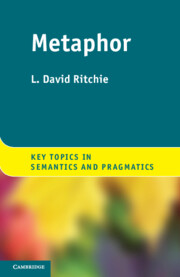Book contents
- Frontmatter
- Contents
- Figures
- Acknowledgments
- 1 Introduction
- 2 Understanding metaphors
- 3 Categorization and relevance
- 4 Conceptual metaphors
- 5 Perceptual simulation
- 6 Metaphors and framing effects
- 7 Language play
- 8 Metaphors in conversation
- 9 Metaphors in politics
- 10 Metaphors in literature
- 11 Closing reflections
- Glossary
- Bibliography
- Index
3 - Categorization and relevance
Published online by Cambridge University Press: 05 February 2013
- Frontmatter
- Contents
- Figures
- Acknowledgments
- 1 Introduction
- 2 Understanding metaphors
- 3 Categorization and relevance
- 4 Conceptual metaphors
- 5 Perceptual simulation
- 6 Metaphors and framing effects
- 7 Language play
- 8 Metaphors in conversation
- 9 Metaphors in politics
- 10 Metaphors in literature
- 11 Closing reflections
- Glossary
- Bibliography
- Index
Summary
‘An apple is a fruit’ tells us that apple belongs to the category, fruit. ‘Sally is a sophomore’ tells us that Sally belongs to the category, sophomores. Both sentences are examples of what may be called category inclusion statements. Glucksberg and his colleagues (Glucksberg, Keysar, and McGlone, 1992) and Wilson and Sperber (2004; Sperber and Wilson, 2008) have proposed that a metaphor is another kind of category inclusion statement, which assigns the topic to a category specified by the vehicle. Thus, ‘Achilles is a lion’ tells us that Achilles belongs to a category specified by lions, something like entities that are brave. Since Glucksberg’s version of category-assignment theory is the most closely related to theories discussed in Chapter 2, I will begin with it.
The theories discussed in Chapter 2 emphasize the transfer of attributes, such as brave and fierce from the vehicle, lion, to the topic, Achilles. In contrast to these theories, Glucksberg and his colleagues argue that the vehicle, lion, refers to a more abstract category (entities that are brave and fierce) rather than to the more basic level category (large predatory felines), and the metaphor assigns Achilles to the more abstract category. With respect to a metaphor such as ‘my lawyer is a shark,’ for which a suitable pre-existing category is not readily identifiable, Glucksberg and Keysar (1990) claim that the metaphor creates what they call an ad hoc category, in this case something like predatory entities*, with sharks as a prime example. In nominal metaphors like ‘my lawyer is a shark,’ they argue that the vehicle (‘shark’) refers to this more abstract ad hoc category, predatory creatures*, rather than to the more basic level category, a cartilaginous fish.
- Type
- Chapter
- Information
- Metaphor , pp. 43 - 67Publisher: Cambridge University PressPrint publication year: 2013



